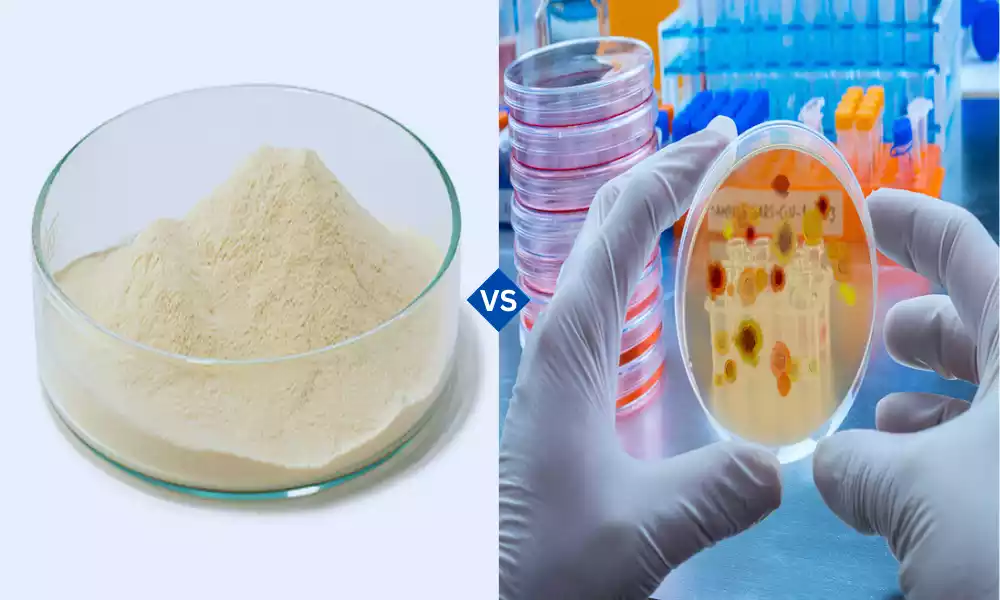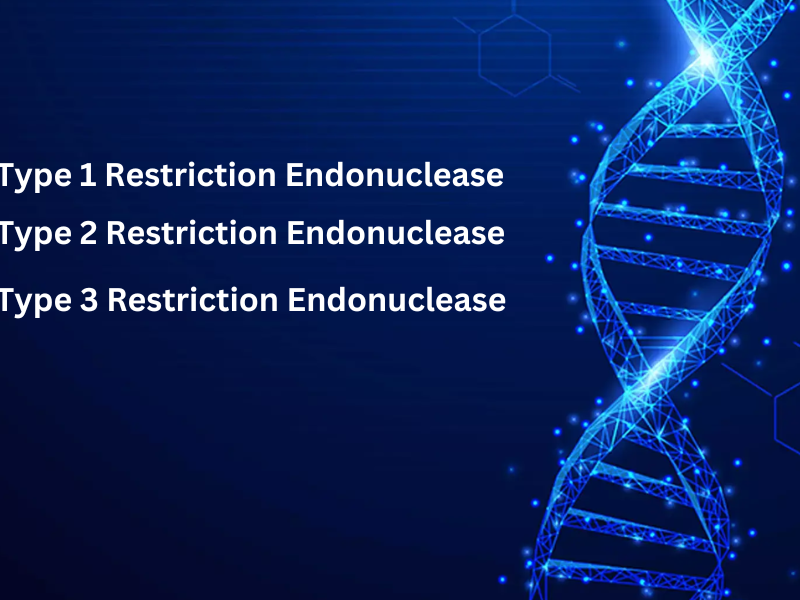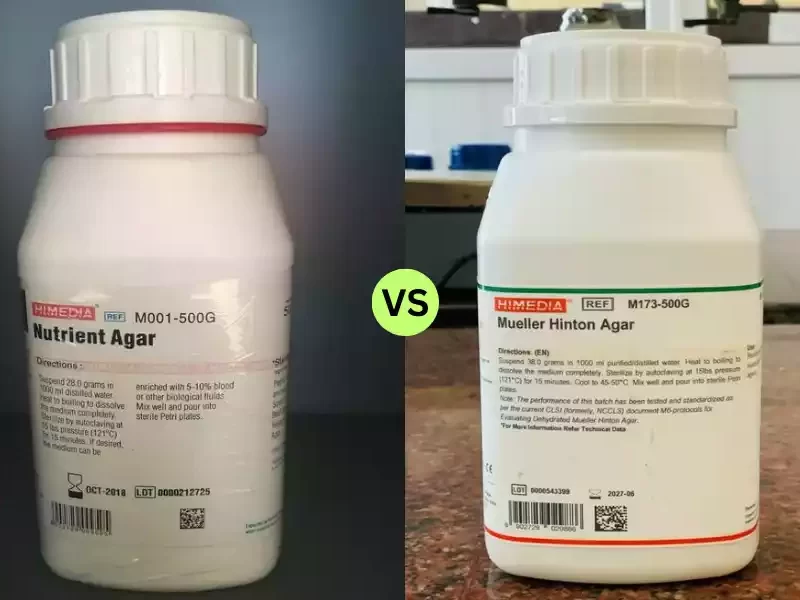Introduction
In the world of microbiology, molecular biology, and biotechnology, two essential components play a significant role in culture media and research: Tryptone and Peptone. These two substances are often used interchangeably, but they are not quite the same. This article will delve into the nuances of Tryptone and Peptone, exploring their definitions, production processes, applications, and key differences. By the end, you’ll have a clear understanding of when to use Tryptone or Peptone and which one might be better suited to your specific needs.
What is Tryptone?
Tryptone is a complex mixture of peptides and amino acids derived from the digestion of casein, a protein found in milk. It is often used as a source of nutrients in microbiological and biotechnological applications. The key characteristic of Tryptone is its high peptide content, making it an excellent substrate for the growth of many microorganisms.
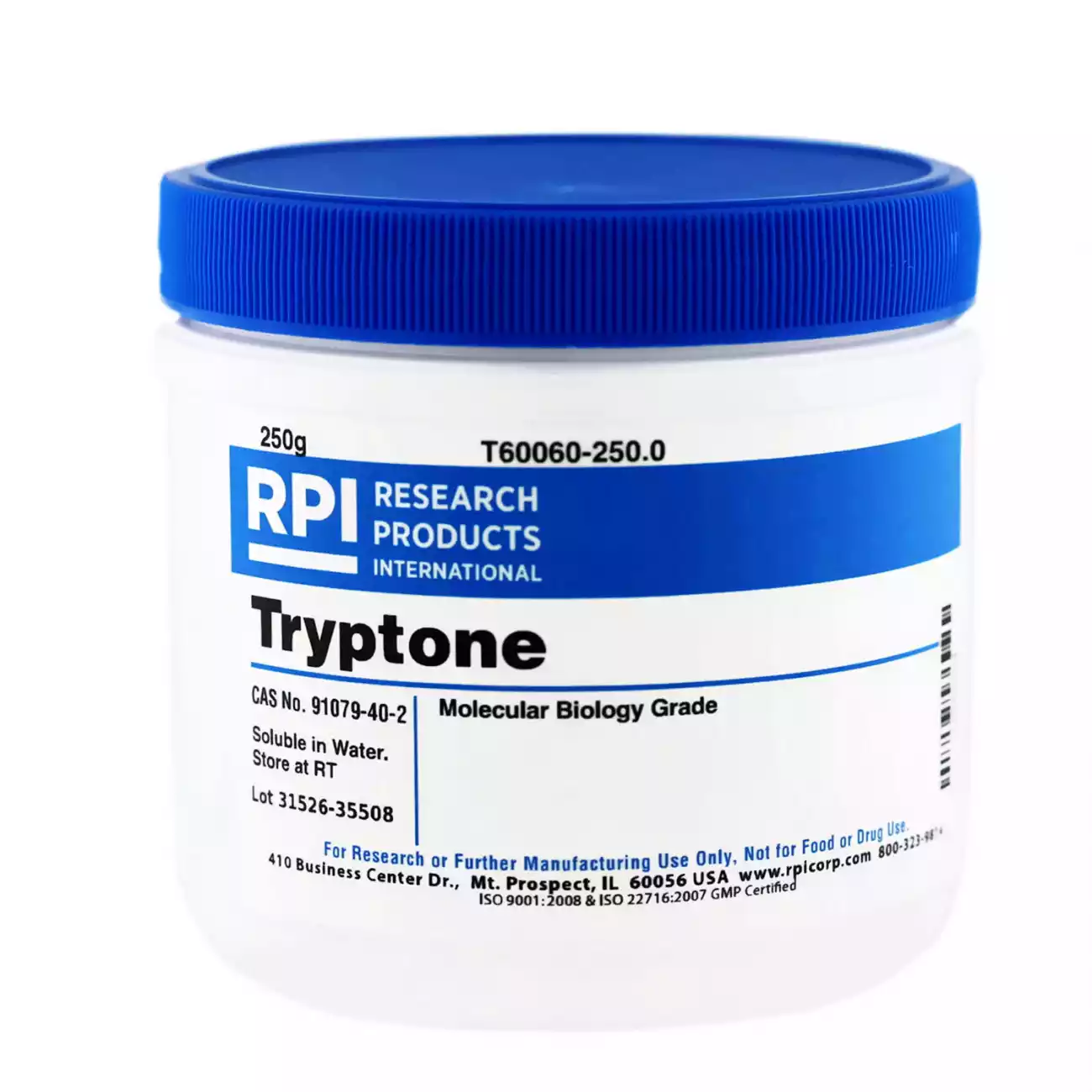
Composition
Tryptone is primarily composed of a mixture of peptides and free amino acids. These peptides are produced by the enzymatic digestion of casein, a milk protein. The resulting peptides are a rich source of carbon and nitrogen, making Tryptone a suitable nutrient for various microorganisms.
Properties
Tryptone has several properties that make it a valuable component in culture media:
- Solubility: Tryptone is highly soluble in water, which simplifies its use in preparing culture media.
- Nutrient Rich: Its rich peptide content provides a ready source of carbon and nitrogen, essential for microbial growth.
- Versatility: Tryptone is compatible with a wide range of microorganisms, making it a versatile nutrient source in microbiological applications.
What is Peptone?
Peptone is also a complex mixture of peptides and amino acids derived from the enzymatic digestion of proteins. While Peptone can be derived from various protein sources, including meat, casein, and soy, the most common source is casein. It shares some similarities with Tryptone but also has distinct differences.
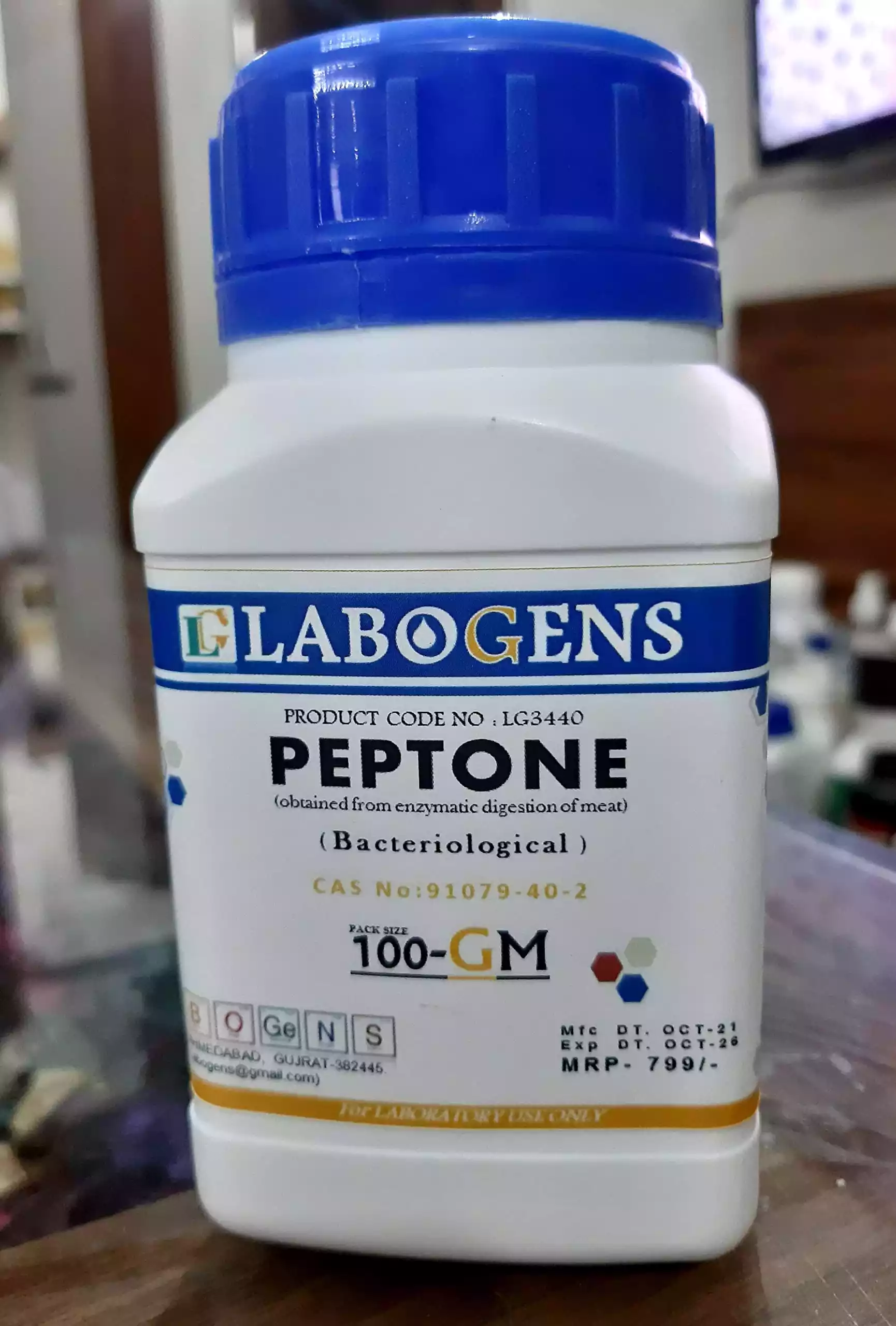
Composition
Peptone is primarily composed of a mixture of peptides and free amino acids, similar to Tryptone. The key distinction between Tryptone and Peptone lies in their sources, as Peptone can be derived from various proteins, not just casein. The choice of the protein source impacts the composition of Peptone and, consequently, its applications.
Properties
Peptone shares some properties with Tryptone but also has unique characteristics:
- Variable Composition: The composition of Peptone can vary depending on the source protein and the enzymatic digestion process. This variability can impact its suitability for specific applications.
- Rich Nutrient Source: Peptone is a valuable nutrient source for microorganisms due to its peptide and amino acid content.
- Application Flexibility: The use of different source proteins in Peptone production allows for a range of applications tailored to specific microbial requirements.
Production Process of Tryptone and Peptone
Tryptone Production
The production of Tryptone involves several key steps:
- Selection of Casein: High-quality casein is chosen as the source material. This casein is typically derived from milk.
- Enzymatic Digestion: Casein is subjected to enzymatic digestion, typically using enzymes like trypsin and chymotrypsin. These enzymes break down the protein into peptides and amino acids.
- Drying and Powdering: The resulting mixture is dried and powdered to create the final Tryptone product.
Peptone Production
Peptone production can vary based on the source protein and the desired characteristics of the final product. Here is a the manufacturing process:
- Source Protein Selection: The choice of source protein can vary and may include casein, meat, soy, or other proteins. This selection influences the composition of the Peptone.
- Protein Hydrolysis: The selected protein is hydrolyzed enzymatically or through acid or alkaline hydrolysis to break it down into peptides and amino acids.
- Purification and Concentration: The resulting mixture undergoes purification and concentration steps to remove impurities and concentrate the desirable components.
- Drying and Packaging: The purified Peptone is then dried and packaged for distribution and use in laboratory and industrial applications.
Application of Tryptone and Peptone
Tryptone and Peptone find diverse applications in microbiology, molecular biology, and biotechnology. Their use is primarily as nutrient sources in culture media, but the specific applications can vary:
Applications of Tryptone
- Microbial Growth Media: Tryptone serves as a nutrient source for a wide range of microorganisms, including bacteria, yeast, and fungi. It is commonly used in culture media for the propagation of these microorganisms.
- Protein Expression: Tryptone can be used in protein expression systems to provide the necessary nutrients for the growth of host organisms like Escherichia coli (E. coli).
- Enzyme Production: Tryptone is also employed in the production of enzymes, as it provides the necessary substrates for enzyme synthesis.
- Research and Bioprocessing: Tryptone is used in various research and bioprocessing applications, where a defined source of nutrients is required.
Applications of Peptone
- Microbial Growth Media: Similar to Tryptone, Peptone is used as a nutrient source in microbial culture media. Its variable composition allows for tailored media formulations.
- Pharmaceutical and Food Industries: Peptone is utilized in the production of pharmaceuticals and in the food industry for fermentation processes.
- Diagnostic Testing: Peptone can be used in diagnostic microbiology to support the growth of specific microorganisms for testing and identification.
- Bioprocessing and Biotechnology: The flexibility of Peptone allows for its use in various bioprocessing and biotechnology applications where specific nutrient profiles are required.
Comparison Table of Tryptone and Peptone
To better understand the differences between Tryptone and Peptone, let’s examine them side by side in a comparison table:
| Property | Tryptone | Peptone |
| Source Protein | Casein (Milk-derived) | Various (e.g., Casein, Meat, Soy) |
| Composition | Predominantly casein-derived peptides and amino acids | Variable, depending on source protein |
| Solubility | Highly soluble in water | Solubility can vary based on source and processing |
| Nutrient Content | Rich in peptides and amino acids | Rich in peptides and amino acids |
| Application Versatility | Suitable for a wide range of microorganisms | Flexible application based on source protein |
| Variability | Generally consistent composition | Composition can vary significantly |
| Application Range | Commonly used in microbiology, protein expression, enzyme production | Used in various industries, including pharmaceuticals, food, and diagnostics |
Which is Better Tryptone or Peptone?
The choice between Tryptone and Peptone depends on your specific application and requirements. There is no one-size-fits-all answer to which is better, as both have their strengths and weaknesses.
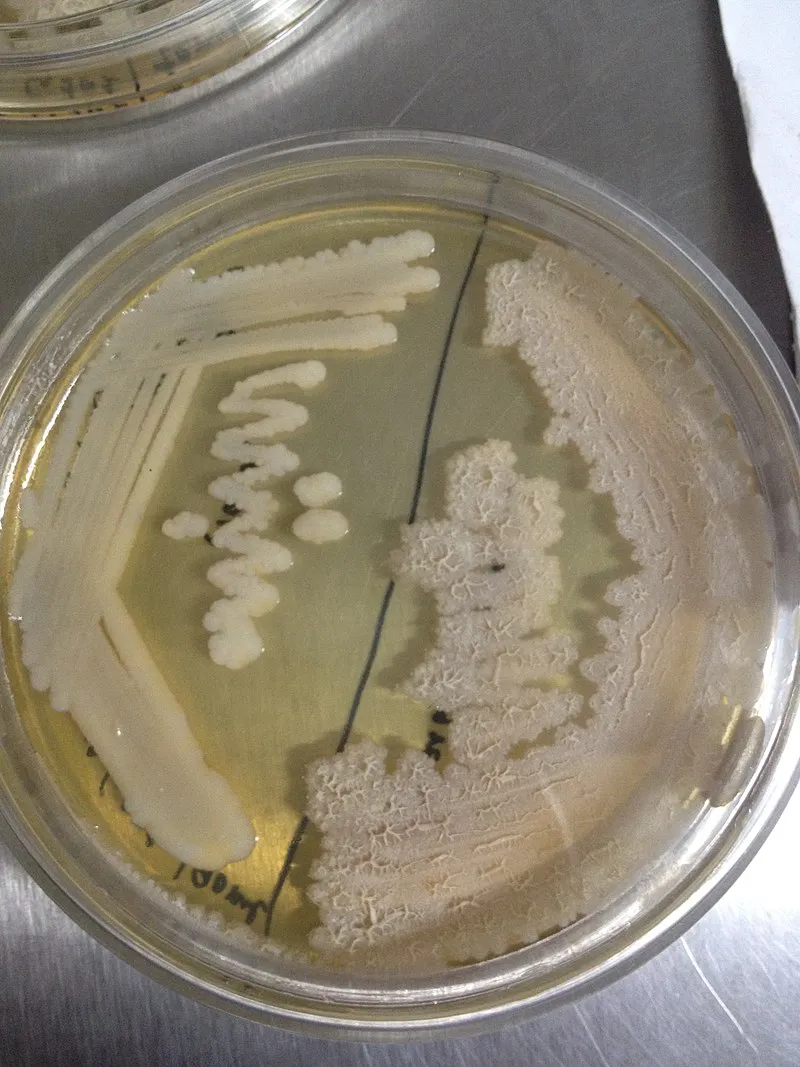
When to Use Tryptone:
- Microbiology and Research: Tryptone is a reliable choice for microbiological research, where consistency in nutrient composition is essential.
- Protein Expression: In protein expression systems, especially for E. coli, Tryptone is often preferred due to its well-defined composition.
- Enzyme Production: When producing enzymes in bioprocessing, Tryptone can serve as a suitable nutrient source.
- General Applications: For general laboratory applications where a consistent source of nutrients is needed, Tryptone is a safe choice.
When to Use Peptone:
- Tailored Nutrient Profiles: If your application requires specific nutrient profiles, Peptone, with its variable composition, can be customized to suit your needs.
- Pharmaceutical and Food Industries: Peptone is commonly used in these industries for fermentation processes.
- Diagnostic Microbiology: In diagnostic testing, where the growth of specific microorganisms is required, Peptone may be a better choice.
- Biotechnology and Bioprocessing: In bioprocessing applications, especially when dealing with various microorganisms, Peptone’s flexibility can be advantageous.
The choice between Tryptone and Peptone depends on your application’s requirements and the level of control you need over nutrient composition.
Safety and Regulations
Both Tryptone and Peptone are generally considered safe for use in laboratory and industrial applications. It is essential to follow safety guidelines and regulations to ensure the proper handling and use of these substances. Here are a few of the key safety concerns and laws:
Safety Considerations
- Personal Protective Equipment: When handling Tryptone or Peptone, wear appropriate personal protective equipment, including lab coats, gloves, and safety goggles.
- Storage: Store Tryptone and Peptone in a cool, dry place, away from direct sunlight and moisture.
- Avoid Inhalation: Minimize the inhalation of Tryptone or Peptone dust by working in a well-ventilated area or using a fume hood.
- Labeling: Properly label containers with the name of the substance, date, and any relevant safety information.
- First Aid: Familiarize yourself with the appropriate first-aid measures in case of accidental exposure, such as eye contact, ingestion, or skin contact.
Regulations
- OSHA: The Occupational Safety and Health Administration provides guidelines for safe handling of chemicals and biological materials in the workplace.
- FDA: The Food and Drug Administration regulates the use of Tryptone and Peptone in the food and pharmaceutical industries.
- European Pharmacopoeia: In Europe, the European Pharmacopoeia sets standards for the use of Peptone in pharmaceutical applications.
- Local Regulations: Be aware of any local regulations or guidelines that may apply to the handling and use of these substances in your region.
Always consult the Safety Data Sheet (SDS) provided by the manufacturer for specific safety information and handling instructions for Tryptone and Peptone.
Where to Buy Tryptone and Peptone
Tryptone and Peptone can be purchased from various sources, including scientific suppliers, laboratory equipment companies, and online distributors. Here are some recommendations for finding reliable sources:
- Laboratory Suppliers: Many well-established laboratory and scientific equipment suppliers carry Tryptone and Peptone. These suppliers often provide high-quality products and the necessary documentation, such as Certificates of Analysis.
- Online Marketplaces: Online platforms like Amazon, eBay, and specialized scientific websites offer a wide range of Tryptone and Peptone products. Ensure you purchase from reputable sellers and check for product reviews.
- Manufacturer Direct: In some cases, it may be beneficial to purchase directly from the manufacturer, especially if you have specific requirements or need large quantities.
- Local Distributors: Depending on your location, there may be local distributors or chemical suppliers who can provide Tryptone and Peptone.
When purchasing Tryptone and Peptone, consider factors such as product quality, packaging, and the reputation of the supplier to ensure you receive a reliable and safe product.
How to Use Tryptone and Peptone
The proper use of Tryptone and Peptone in laboratory and industrial applications is crucial for achieving consistent and reliable results. Below are some guidelines on how to utilize them:
- Weighing and Measuring: Accurately measure the required quantity of Tryptone or Peptone using a balance or scale that is regularly calibrated.
- Solubility: Tryptone is highly soluble in water, but Peptone’s solubility may vary based on its source and processing. Ensure thorough mixing and dissolution when preparing culture media.
- Sterilization: Autoclave or sterilize the culture media containing Tryptone or Peptone to ensure it is free from contaminants before use.
- Concentration: Adjust the concentration of Tryptone or Peptone in your culture media according to the specific requirements of the microorganisms you are cultivating. Different microorganisms may have varying nutrient needs.
- Labeling: Properly label all containers to indicate the contents, date of preparation, and any other relevant information.
- Storage: Store Tryptone and Peptone in a cool, dry place and protect them from moisture and contamination.
- Quality Control: Perform quality control tests to ensure the consistency and suitability of the culture media containing Tryptone or Peptone.
- Documentation: Keep detailed records of the composition and preparation of culture media, which is essential for quality control and reproducibility.
Storage and Shelf Life
Proper storage of Tryptone or Peptone is essential to protecting their quality and extending its shelf life. Here are a few important storage tips:
- Storage Conditions: Store Tryptone and Peptone in a cool, dry place, away from direct sunlight and moisture. Make sure the containers are secure to prevent contamination.
- Temperature: Maintain a stable temperature within your storage area. Fluctuations in temperature can affect the quality of the products.
- Moisture Control: Protect Tryptone and Peptone from humidity and moisture, as moisture can cause clumping and degradation.
- Contamination Prevention: Keep the containers clean and free from contamination. Use clean scoops or utensils when handling these substances.
- Shelf Life: Tryptone and Peptone generally have a shelf life of two to three years when stored properly. Referring to the manufacturer’s advice will provide more specific shelf-life details.
- Quality Control: Periodically check the quality of Tryptone and Peptone to ensure they meet the required specifications for your applications.
Conclusion
Tryptone and Peptone are indispensable components in microbiology and biotechnology, serving as nutrient sources in culture media. Tryptone, derived from casein, offers consistency and is ideal for microbiological research and protein expression. Peptone, with its variable composition from various protein sources, is favored in applications requiring tailored nutrient profiles.
Decisions between them depend upon your application needs and specific specifications. Proper handling, adherence to safety guidelines, and meticulous storage are vital for maintaining their efficacy, making them indispensable tools in laboratory and industrial processes.

